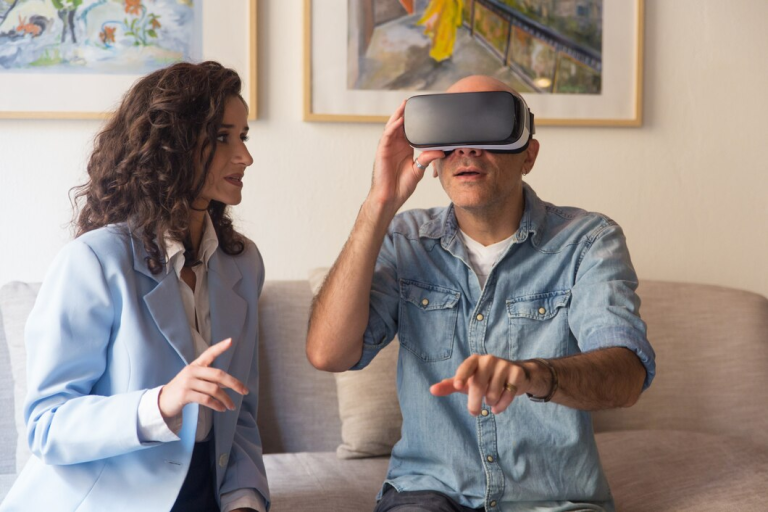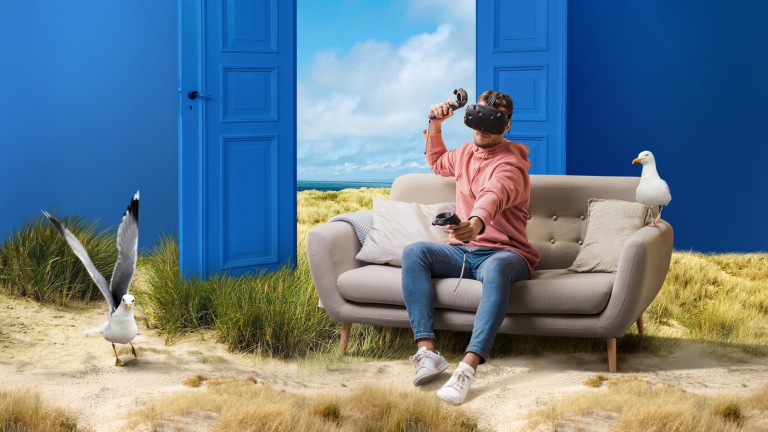In today’s fast-paced architectural world, virtual reality (VR) has revolutionized the way designers conceptualize, present, and refine their projects. With immersive technology, architects can bridge the gap between vision and reality, allowing clients and collaborators to experience designs like never before. For VRchitects, staying ahead means embracing the best VR tools available. Here’s a guide to the must-know virtual reality tools for architects in 2025 and beyond.
Why Virtual Reality is Essential for Architects
Virtual reality transforms the design process by:
- Enhancing Visualization: Clients can walk through projects before construction begins.
- Improving Collaboration: Real-time changes and interactions improve team efficiency.
- Reducing Errors: Spot potential design flaws early, saving time and money.
Now, let’s dive into the VR tools architects should add to their toolkit.
1. Enscape
Overview:
Enscape is a real-time rendering and VR plugin that integrates directly with popular design software like Revit, SketchUp, and Rhino. It allows architects to create immersive walkthroughs in minutes.
Key Features:
- Live Updates: See real-time changes as you adjust your design.
- Seamless Integration: Works within your existing design software.
- Easy VR Setup: Compatible with most VR headsets like Oculus Rift and HTC Vive.
Why Architects Love It: Enscape’s simplicity and speed make it a go-to tool for quick client presentations.
2. Unreal Engine
Overview:
Unreal Engine is a powerful tool for creating photorealistic renderings and immersive VR environments. It’s ideal for large-scale architectural projects.
Key Features:
- High-Quality Graphics: Deliver stunning visuals with real-time ray tracing.
- Customizable: Build interactive environments tailored to your project.
- Data Compatibility: Import files from software like CAD and BIM.
Pro Tip: Pair Unreal Engine with Twinmotion for a streamlined workflow.
3. Twinmotion
Overview:
Twinmotion offers an intuitive interface for creating lifelike renderings and VR experiences. Its drag-and-drop functionality makes it accessible for architects of all skill levels.
Key Features:
- Real-Time Rendering: Instantly see how design changes affect your model.
- Extensive Library: Access a wide range of materials, lighting, and objects.
- VR Ready: Easy integration with popular VR devices.
Why Architects Love It: Its user-friendly approach allows for quick turnarounds without sacrificing quality.
4. IrisVR
Overview:
Specifically designed for architects and designers, IrisVR simplifies the process of creating VR walkthroughs from 3D models.
Key Features:
- One-Click Conversion: Import models from Revit, SketchUp, or Rhino.
- Multi-User Collaboration: Explore designs with team members and clients in VR.
- Customizable Views: Adjust scales, viewpoints, and details to suit your needs.
Pro Tip: Use IrisVR for remote collaboration to keep projects on track.
5. Autodesk Revit with VR Plugins
Overview:
Revit remains a staple for architects, and its compatibility with VR plugins like Prospect by IrisVR and Enscape enhances its utility.
Key Features:
- BIM Integration: Combine detailed building information with immersive visualization.
- Interactive Models: Walk through complex designs with ease.
- Efficient Collaboration: Share VR experiences directly with stakeholders.
Why Architects Love It: Revit’s widespread adoption makes it an easy choice for firms looking to incorporate VR.
6. Unity
Overview:
Unity is a versatile tool for architects who want to build interactive 3D environments and VR experiences. It’s widely used in both architectural visualization and game development.
Key Features:
- Real-Time Rendering: Create photorealistic models in real-time.
- Custom Interactions: Add interactive elements like doors, lighting, or objects.
- Multi-Platform Support: Export experiences for desktop, VR, and mobile devices.
Pro Tip: Unity’s Asset Store offers pre-built components to speed up development.
7. Oculus Quest 2
Overview:
Though not a software, the Oculus Quest 2 is an essential VR headset for architects. Its wireless design and high-resolution display make it ideal for presentations and design reviews.
Key Features:
- Standalone Device: No need for external hardware or cables.
- High-Resolution Visuals: Experience designs in crisp detail.
- Wide Compatibility: Works with tools like Enscape, Twinmotion, and IrisVR.
Why Architects Love It: The portability and ease of use make it perfect for on-the-go presentations.
Final Thoughts
Virtual reality is no longer just an optional add-on for architects—it’s a necessity. Tools like Enscape, Twinmotion, and Unreal Engine empower architects to bring their designs to life, while hardware like the Oculus Quest 2 ensures immersive client experiences. For VRchitects, embracing these technologies means staying at the forefront of architectural innovation.
Ready to elevate your projects? Start integrating these VR tools into your workflow and see how they transform your designs and client relationships.






